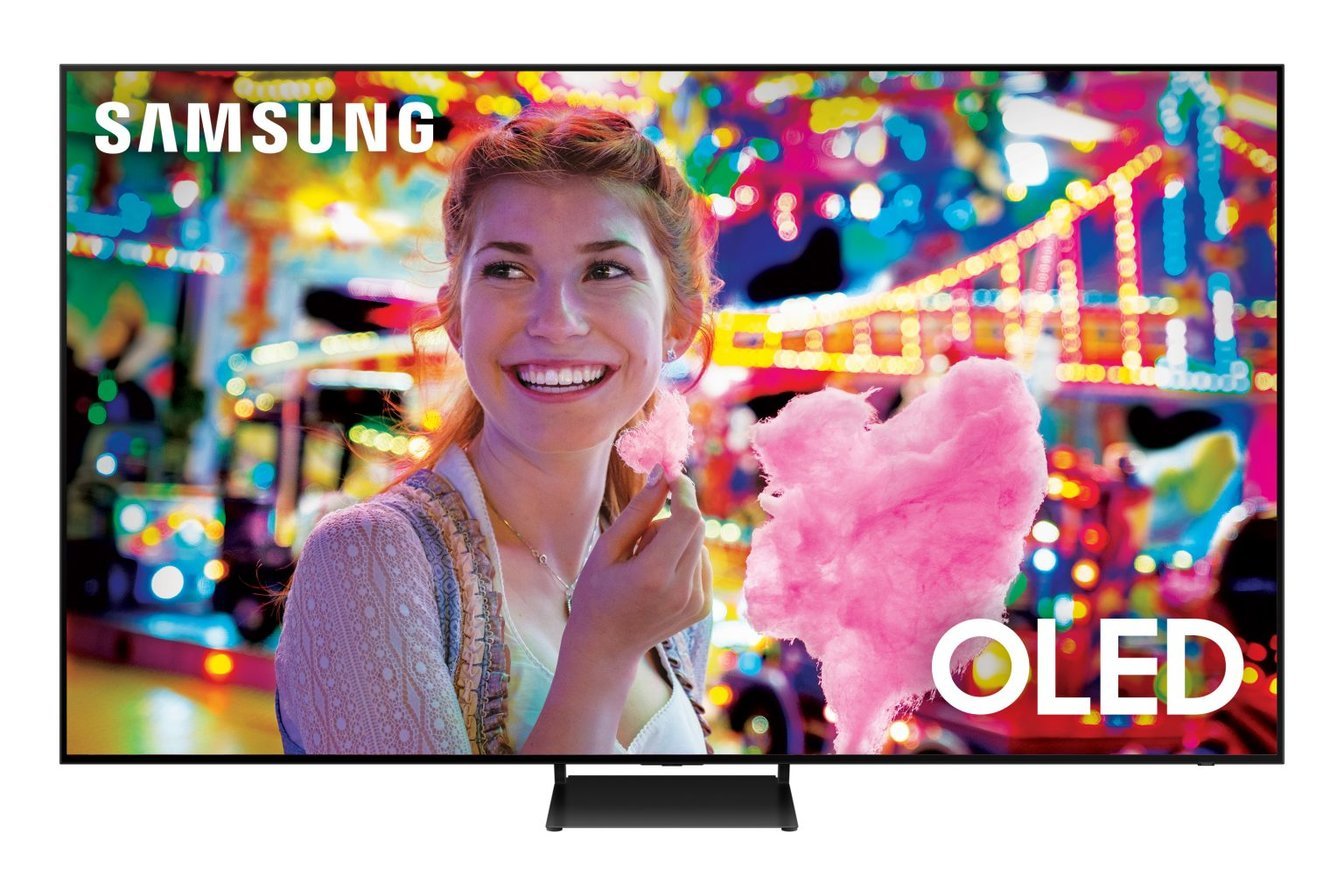Samsung Electronics sprung a big surprise today, announcing the immediate availability of its 83-inch S90C OLED television in the U.S., making it the first product to emerge from its new partnership with LG Display.

News of Samsung’s 83-inch S90C, which is notably based on a WRGB OLED panel instead of QD-OLED, first appeared last month. A report in South Korea revealed that the company had registered the product with that country’s National Radio Research Institute, a necessary legal requirement there. That report followed news in May that Samsung had finally agreed a deal with LG Display to purchase two million OLED TV panels between now and 2024, primarily the larger 77-inch and 83-inch sizes. The deal will see Samsung buy a total of 10 million OLED panels by 2026, and followed more than a year of negotiations between the two companies.
Originally, when the deal was first announced, it was thought that we’d probably have to wait until next year to see Samsung’s first WRGB OLED TV. Then, when the Korean report emerged, it was thought that we might see the new TV launch at IFA in September. However, Samsung has worked much faster than anyone seems to have anticipated, and it has confirmed the TV is available in the U.S. now with a $5,399 price tag (around £4,185 in U.K. money).
There has been no announcement yet from Samsung’s U.K. business, so we’ll have to wait and see if this extra large S90C arrives on British shores, or indeed other global markets.
Samsung’s announcement notably didn’t clarify which panel type the 83-inch S90C is using, referring to the model simply as an “OLED” TV. There are fears this may cause a lot of confusion and possibly even upset for consumers, because Samsung’s OLED TV range now uses two very different types of panel. Last year’s S95B OLED TV was exclusively made using a QD-OLED panel from Samsung Display, which is a different technology and delivers what some say is a superior picture to LG’s WRGB OLED panel, though opinions differ. Even worse, Samsung's existing 55-inch, 65-inch and 77-inch S90C TVs all currently use QD-OLED.
In any case, with Samsung’s OLED lineup now using both types of panel, consumers may struggle to know exactly which display technology their TV is using. HDTVTest’s Vincent Teoh recently outlined Samsung’s OLED strategy and the resulting panel lottery it will lead too, and explained why this might upset some consumers.
The confusion won't apply to this specific model, though, as it’s known that Samsung Display doesn’t yet produce any 83-inch QD-OLED panels, meaning it is practically guaranteed to be using an WRGB panel. In its press release, Samsung also makes reference to a 4K Neural Quantum Processor, which further suggests the model uses an LG-supplied panel.
Aside from the outsourced panel, the 83-inch S90C appears to be more or less the same as the other models that (probably) use QD-OLED panels. It features a new, LaserSlim design with Dolby Atmos sound and Samsung’s TV Plus and Gaming Hub.
“Large screen sizes are the fastest growing segment in the TV industry,” said James Fishler, senior VP of Samsung Electronics America’s home entertainment and display business. “With this new 83-inch class OLED S90C 4K TV model, we are providing yet another option for people to experience the benefits of OLED TV from Samsung, on an even bigger screen.”
Samsung is placing a big bet on consumer’s appetite for big-screen TVs. Last week, the company launched an even bigger, 98-inch Q80C QLED TV, available in both the U.S. and the U.K., priced at $7,999 and £6,499, respectively. That model, which is currently available for discount if you trade-in your old TV and also comes with a free soundbar and installation, is however just a standard LCD display. Even so, the picture quality might not be quite as good but the jump from 83 to 98 inches should be very noticeable and may be worth the increased price, if you have a living room large enough to fit it in.
In any case, it will be interesting to see how popular the Samsung 83-inch S90C OLED TV proves to be. Assuming it sells well, that would be a sign that consumers aren’t too bothered about the difference between WRGB and QD-OLED. Which would be just as well, as Samsung’s OLED range is likely to become much more reliant on LG Display’s technology as we move into 2024 and beyond.